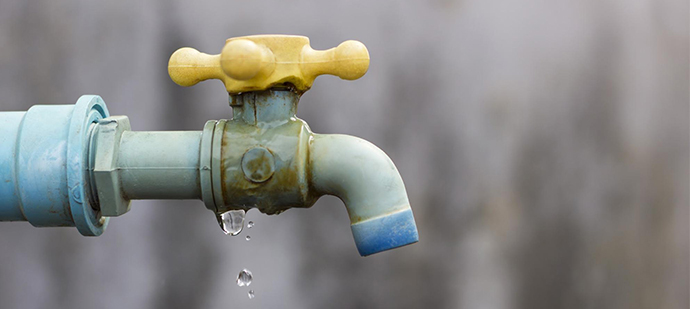How to Examine If Your Residence Has a Concealed Leak
How to Examine If Your Residence Has a Concealed Leak
Blog Article
We have unearthed this post relating to Hacks to detect leaks directly below on the internet and reckoned it made good sense to share it with you on this page.

Early detection of leaking water lines can minimize a prospective catastrophe. Some tiny water leakages may not be noticeable.
1. Take A Look At the Water Meter
Examining it is a surefire method that helps you find leakages. If it moves, that suggests a fast-moving leakage. This implies you might have a slow leakage that can even be below ground.
2. Examine Water Consumption
Analyze your water costs and also track your water intake. As the one paying it, you need to notice if there are any discrepancies. If you find sudden changes, in spite of your consumption being the same, it means that you have leaks in your plumbing system. Remember, your water costs need to drop under the exact same variety each month. An unexpected spike in your expense suggests a fast-moving leak.
At the same time, a stable boost each month, despite having the very same habits, shows you have a slow leak that's also slowly escalating. Call a plumber to extensively inspect your residential or commercial property, particularly if you feel a warm location on your flooring with piping beneath.
3. Do a Food Coloring Test
When it comes to water intake, 30% comes from toilets. If the shade somehow infiltrates your bowl throughout that time without flushing, there's a leak between the container and bowl.
4. Asses Outside Lines
Don't fail to remember to examine your outdoor water lines as well. Examination spigots by connecting a yard hose. Must water seep out of the link, you have a loosened rubber gasket. Change this and also guarantee all links are tight. It will certainly assist get it properly took a look at and kept yearly if you have actually got a lawn sprinkler system. One small leakage can lose lots of water as well as increase your water expense.
5. Examine and also Evaluate the Scenario
Home owners ought to make it a behavior to check under the sink counters as well as also inside cabinets for any type of bad odor or mold and mildew growth. These two red flags show a leakage so punctual interest is needed. Doing routine assessments, even bi-annually, can save you from a major problem.
Check for discolorations and weakening as most devices and also pipelines have a life span. If you think leaking water lines in your plumbing system, do not wait for it to rise.
Early detection of dripping water lines can reduce a possible disaster. Some small water leaks may not be noticeable. Checking it is a proven way that assists you uncover leaks. One small leakage can waste tons of water and also increase your water expense.
If you suspect dripping water lines in your plumbing system, do not wait for it to escalate.
How to Know If Your Home Has a Hidden Leak
Water Meter Reveals Inexplicable Water Usage
If you’d like to test whether or not there’s a leak somewhere in your home, you can do this using your water meter. Here is how to conduct the test:
Don’t use any water in your home for at least 30 minutes; this also means not turning on faucets or water-using appliances.
Go outside, and check your water meter for activity.
If your water meter shows that there was activity, even though no one was using any water, this proves that there is a leak in your home.Visible Mold or Mildew Growth
Leaks behind walls create moist, dark environments that allow mold and mildew to grow and thrive. Eventually, you might see mold growth forming on the wall closest to a hidden leak.
If mold is growing in an area that receives a high amount of moisture, such as a bathroom, it may simply be an indication that better ventilation is needed. However, if you see mold growth on a wall or the ceiling in an area where you would not expect, you probably have a hidden leak.
Musty, Mildew Odor
Sometimes you might not be able to see the mold or mildew that is growing as a result of a leak. However, the smell can give the problem away just as easily. If you catch a whiff of something musty, there’s a good chance that old water is collecting somewhere in your home that you can’t see.
Stained/Warped Walls, Ceilings, or Floors
When your home soaks up water, a variety of red flags can become visible, including ceiling stains, bubbling drywall, warped walls, and sagging floors. While these issues can be caused by excess humidity, they can also be signs that a pipe or plumbing connection has started leaking behind your walls.
Inexplicably High Water Bill
After a while, you get a general sense for what your water bill should be. If you own a pool or sprinkler system, your bill will tend to be higher during summer. However, if you receive a water bill that seems especially high, and you can’t figure out what caused it, then you may have a hidden leak somewhere that’s increasing your bill.
https://www.plumbingjoint.com/blog/2019/july/how-to-know-if-your-home-has-a-hidden-leak/

Do you enjoy more info about Locating water leaks? Give a short review further down. We'd be interested to find out your insights about this entry. Hoping that you come back again in the near future. Enjoyed reading our piece of writing? Please share it. Help another person find it. Thank-you for your time invested reading it.
Report this page